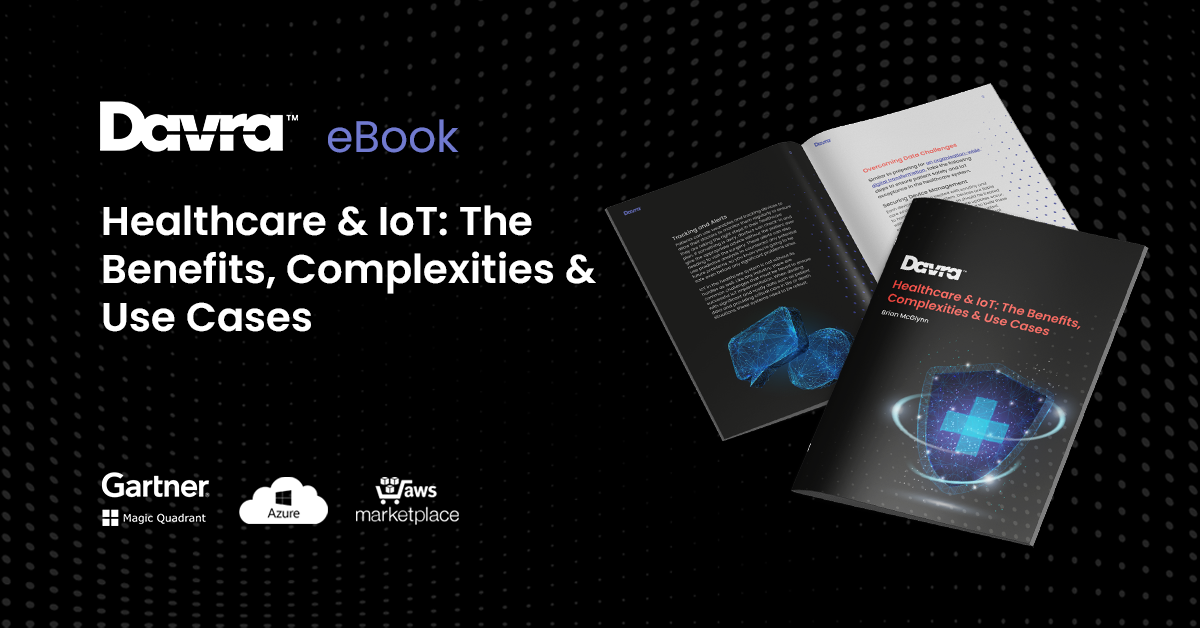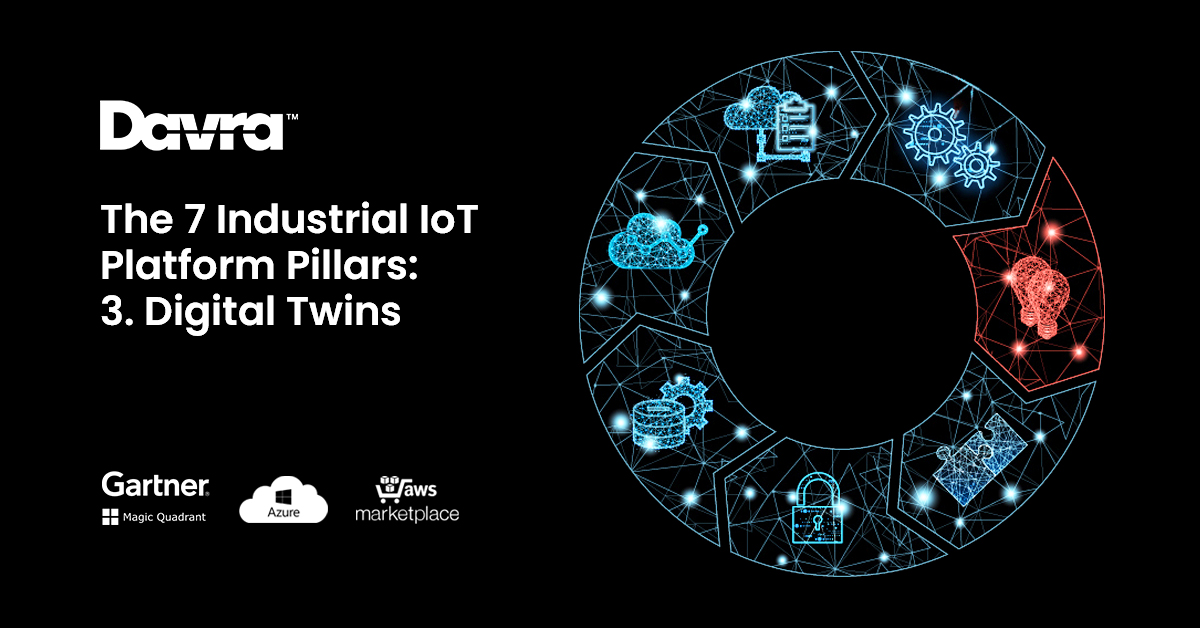IoT in Healthcare Use Cases eBook
Download Your Free IoT in Healthcare Use Cases eBook
Read More


Digital twins make up the third critical component of IIoT platforms and are a key consideration when deciding to adopt IoT technology in an enterprise and industrial environment. Gartner first coined the term, and it’s been spoken of in the Industrial IoT world as the best development within the Smart Factory technologies.
Digital twins are of great importance to predictive maintenance and manufacturing due to enabling faster production times, improving operational systems and productivity, and reducing maintenance costs.
This all sounds wonderful, but what exactly ARE digital twins, and how do they fit into the IIoT landscape?
Gartner defines digital twins as a software design pattern that represents a physical object with the goal of understanding the asset’s state, responding to changes, improving business operations and adding value. Digital twins are somewhat based on object modelling or device shadows. They are essentially a digital representation of a physical asset.
Take your operational machinery in a warehouse for example. Digital twin technology encompasses augmented and virtual reality, paired with 3D data and modelling to develop a virtual or digital model of the physical object. A warehouse robot along with all of the physical manufacturing processes are fitted with sensors which collect data on the environmental conditions, the behavioural characteristics of the machine and work being performed to monitor the operational process.
Developing digital twins within your organisation can open up a whole new business model and drive new outcomes for your products and services, through procurement, manufacturing and warehousing. Developing a robust model allows for questioning and what-if statements based on the past streams of data collected by the sensors. Processes can be scrutinised and simulations developed to trial new machine outcomes, which couldn’t otherwise be achieved.
Digital twins allow us to model the entities in that environment so we can present front-facing applications in a way that makes sense to you, our end user who’s consuming the application.
Digital twins are the digital keystone of the platform. In order to have a successful digital twin strategy you must do things right in the underlying layers as well. End users aren’t so device-focused but more digital twin focused, so the platform needs to have a good device management and data strategy, powerful APIs, as well as inject microservices and business logic into your apps, monitoring security and overlay AI.
If you have not got these things right, you won’t get the digital twin right either.
There’s numerous types of data that you can associate with your twin; attributes, devices, static and dynamic images, for example.
In the Davra platform, twin services encapsulate an instance of a twin, and all the capabilities and services that come from the twin.
At the core is the twin instance. A building for example, lies on top of the data storage, time series database, log database and relational databases. The message bus around the twin essentially feeds it information to update the state of the twin and make it more intelligent.
Other types of data associated with digital twins include:
• Twin capabilities;
• Twin attributes/model;
• Twin integrations; synchronisation with another system such as an ERP;
• Twin business logic; apply intelligence;
• Twin AI; rules, rich view of an asset, various forms of unsupervised learning and supervised;
• Twin data policies; how you take and interpret the raw data.
• Twin consumption;
• Twin control; bidirectional channel down the twin to actuate the asset device at the edge.
Vaccines
In the supply chain, vehicles that carry the vaccine along on a truck are equipped with devices which show the CO2, temperature and vaccine level. If anything goes wrong on the journey, because everything is tracked you can see where problems occur.
The vaccines are then loaded onto a train, so the relationship changes. These dynamic relationships change from the truck asset to the train asset.
In the application, you can look at the driver of vehicles to see the driver’s statistics, for example if he’s been driving 6 different vehicles over the month, you can zoom in on the driver and see his statistics instantly.
Looking at fleet management, Davra have built a dictionary so when a light flashes on a vehicle and you don’t know what the warning is, rather than looking at the code for the warning Davra will also give the exact meaning of the code. For example if there is something wrong with oil, the code will display that it is an oil problem.
Individual Health Information
You can also monitor individuals as a virtual twin of the person. Customisable dashboards can be created to display all the different information being collected.
Elderly people living at home on their own can be monitored for their sleep, heart readings, or body composition. These are all tracked through devices such as wearables, bed mats, body analyzers; smart weighing scales, heart data, activity and environmental data from the room; you can see if they’ve opened a door.
When you apply behavioural analytics to this, you can then learn and create the digital signature or fingerprint of the individual which highlights their daily pattern.
How do you spot anomalies when there are so many metrics at play here?
Davra uses models that will collapse all these metrics down into one metric to see whether the patterns are normal or not. Mahalanobis distance metrics are at play here; there are different distances you can go from the centre of the model with different variables, but if you go more than a set number outside of the norm, then there is definitely something statistically different going on with that person. This metric is used to find anomalies and outliers.
This is still hard to understand and make into an instance, so the key last piece is to always make the analytics explainable and in an easy to understand format. In this instance, the caregiver would be able to notice the unusual routine from looking at the application outputs and alerts.
To create a process around it, stateful instances must be made. Comments or upload attachments can be added to your instance. This enables history and audit trail visibility to see who’s liable and who responded to the event and when.
In the individual health example, with this digital twin there’s one person and about 5 devices stitched together which holistically look at that person. Then business logic is applied to be able to interpret that raw data, create derived metrics such as their routine, and then alert based on those derived metrics. An incident response workflow is then put in place to deal with those alerts.
Digital twins can play a crucial role in your organisation across any number of processes and use cases. Not only can you map your entire workflow and machinery, but you can also monitor an individual’s health on an ongoing basis, both saving lives and creating safe environments for your residents. On the Davra platform, you can easily create the applications and devices to manage your twins, as well as customised graphs and dashboards to visualise this data.
If you would like to chat to Davra about how digital twins can improve the reliability and sustainability of your production lines or any other challenges you face, please contact us today.
Brian McGlynn, Davra, COO
Download Your Free IoT in Healthcare Use Cases eBook

Davra IoT is the only Industrial IoT Platform Available on AWS Marketplace
Read MoreThe Collaboration of Humans & Robots Has Created The Cobot
Read More